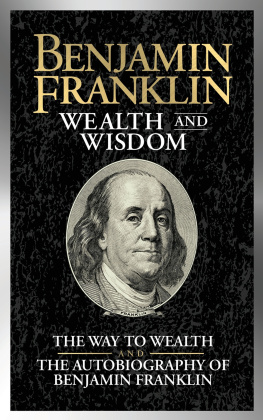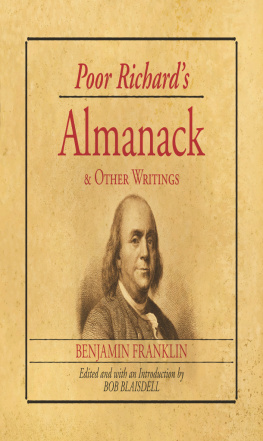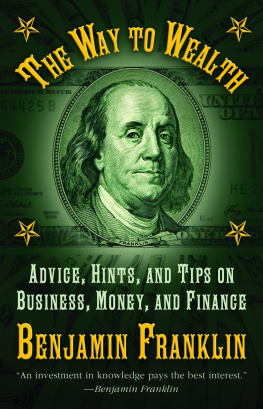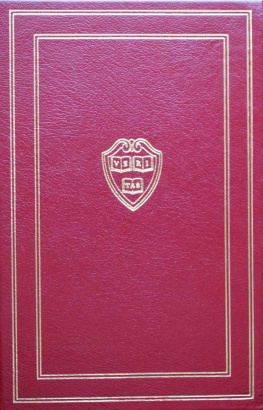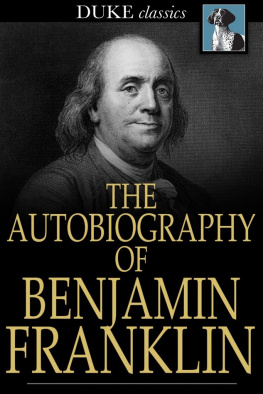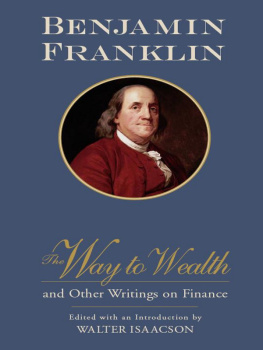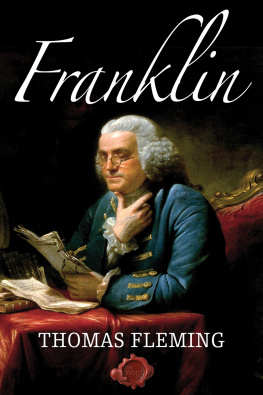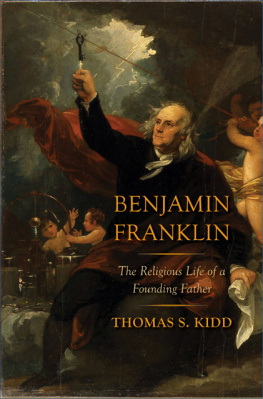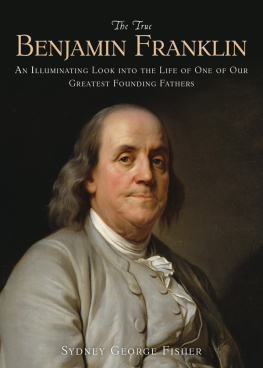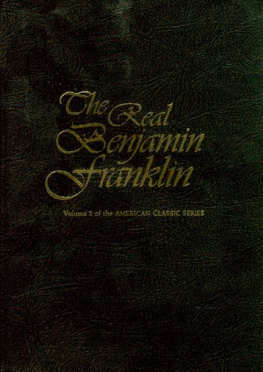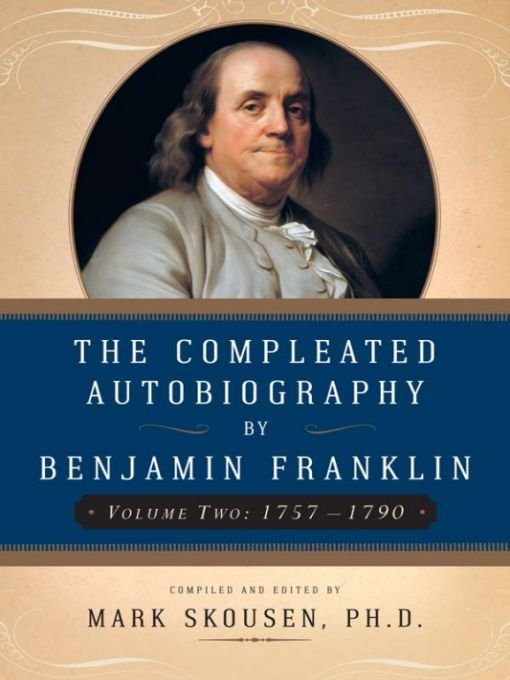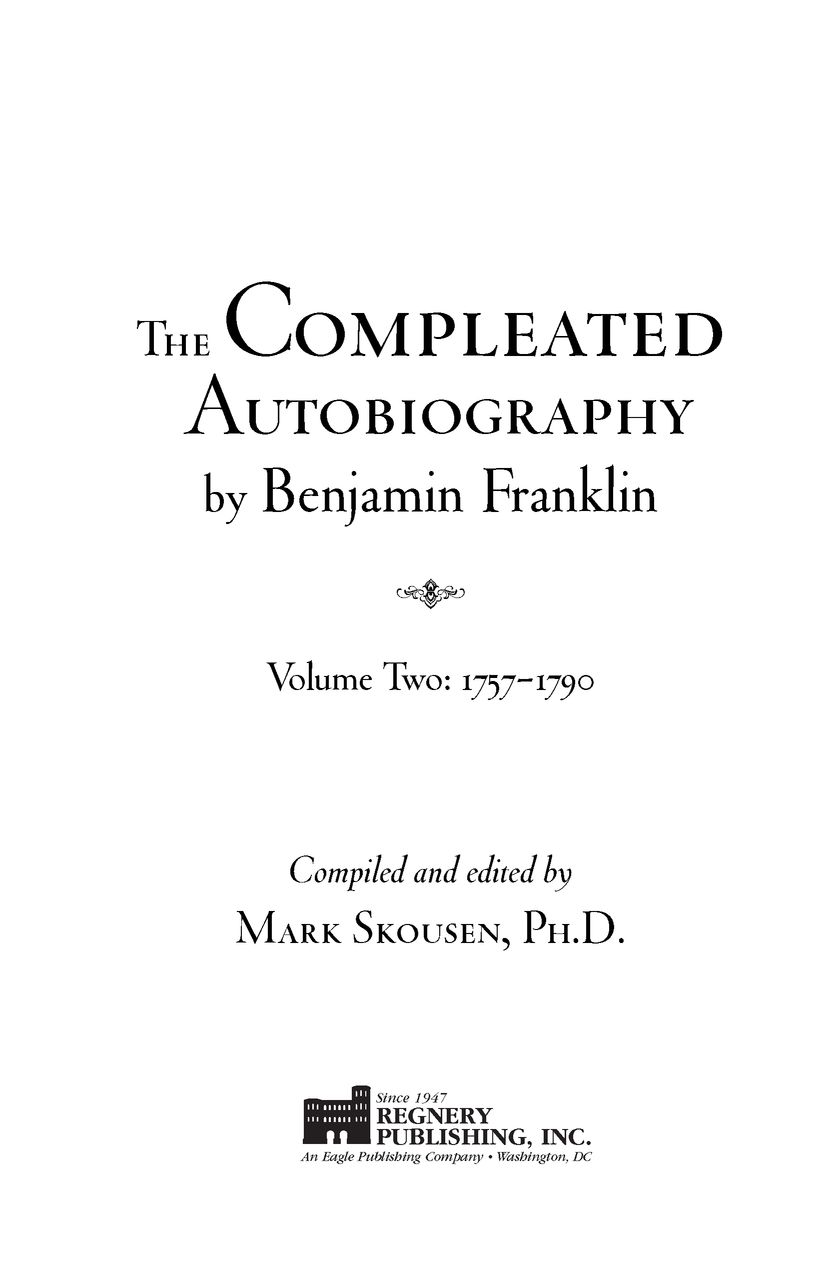Table of Contents
DEDICATED TO
My wife, Jo Ann Skousen,
our five children,
Valerie Lee, Timothy Mark, Lesley Ann,
Todd Franklin, and Hayley Elizabeth,
and all other descendants of Benjamin Franklin
Acknowledgments
If you would not be forgotten, as soon as you are dead and rotten, either write things worth reading, or do things worth the writing.
BEN FRANKLIN
Finishing the Autobiography of Benjamin Franklin has been a longtime adventure. Many people have been involved in this project over the years, and I would like to acknowledge them here.
First, appreciation goes to the editors and staff at Yale University in charge of compiling and editing the Papers of Benjamin Franklin. In particular, the current editor, Ellen Cohn, answered many questions and provided me the Franklin Papers Reader CD that contains virtually the entire collection of published and unpublished Franklin papers, including a translation of many of Franklins letters in French, an invaluable tool in compiling and editing this manuscript. I wish to thank Yale University Library, the American Philosophical Society, and the Library of Congress, among others, for granting permission to publish copies of the original documents related to Franklin.
The staff at the various libraries at Columbia University were also helpful in locating materials related to Franklins autobiographical writings. Thanks also to the historian Carl Van Doren, who not only wrote the definitive biography Benjamin Franklin (New York: Viking Press, 1938), but collected Benjamin Franklins Autobiographical Writings (New York: Viking Press, 1945), which I found useful in my own efforts. I also depended on Thomas Flemings excellent compilation, Benjamin Franklin: A Biography in His Own Words (New York: Harper & Row, 1972); Claude-Anne Lopezs Mon Cher Papa, Franklin and the Ladies of Paris (New Haven: Yale University Press, 1990); and The Private Franklin: The Man and His Family, by Claude-Anne Lopez and Eugenia W. Herbert (New York: W. W. Norton, 1975).
I would like to thank my mother, Helen Louise McCarty Skousen, for passing down the legend of our familys relationship to Ben Franklin. She is responsible for my early fascination with Franklins life and work. As a young man, I collected proverbs from Poor Richards Almanac, and as an adult, I gained a great deal of pleasure posing as Franklin from time to time, visiting the Franklin House in Philadelphia and Craven Street in London, and writing a little book, The Wit and Wisdom of Benjamin Franklin (London: Pickering & Chatto, 1996).
Special appreciation also goes to my wife and lifelong editor, Jo Ann Skousen, who taught me years ago how to know a participle from a predicate. Her professional editing and arranging skills helped make this work, and all of my writings, flow smoothly and naturally. Without her extraordinary efforts, this work would have remained unfinished.
Lastly, I would like to thank Jeff Carneal, president of Eagle Publishing; Marji Ross, the publisher; and Stephen Thompson, the senior editor, who recognized at once the value of bringing to life the final thirty-three years of Franklins illustrious career in a challenging new format.
To all these, I quote the words of Franklin, a true friend is the best possession.
MARK SKOUSEN
New York, New York
Introduction
Had Franklin been able to write about every period of his life and all of his achievements, his Autobiography would have been one of the most remarkable documents ever produced.
ROBERT W. MOORE
And yet he by no means left the great remainder of his life untold.
CARL VAN DOREN
As a young reader, I was fascinated with Benjamin Franklins success as an entrepreneur, inventor, civil servant, and philosopher-wit. When I came to the end of his unfinished Autobiography, I wanted desperately to read about his life in London as a colonial agent, his role in the Declaration of Independence, his service as Americas first ambassador to France, and his part in creating a new constitution and a new nation. But it was not to be. The official autobiography of Benjamin Franklin ends abruptly in 1757, when he was just 51 years old. Another 33 years of his life were still to be recorded when he died in 1790, leaving out the most eventful years of his illustrious political career. What occurred over the next three decades made him a famous man, whom one biographer called the most beloved and celebrated American of his age, or indeed of any age.
That Franklin intended to complete his memoirs is without question. On the second day of writing his Autobiography, while visiting the Jonathan Shipley family in Twyford, near Winchester, England, he made an outline of his entire career. He divided each manuscript page into two columns, leaving the right-hand columns blank for making future additions and changes. Franklin addressed the material he had written so far to the more general use [of] young readers in pursuing a life of business. By 1757, Franklin was already known as an accomplished figure who had achieved fame and fortune as a publisher, postmaster, scientist, inventor, and public citizen of Philadelphia, and he desired to pass along his prudent and imprudent experiences to future generations. But the hard lessons he learned as a diplomat and revolutionary were left unrecorded when Franklins mortal pen stopped on April 17TH, 1790, at the age of 84.
William Temple Franklin recognized soon after the death of his grandfather the need for a completed autobiography, and he in fact attempted to compile the remaining account, hoping to draw on Franklins extensive outline, journals, copies of letters, and published materials to finish the job. The result was the publication, after endless delays, of Memoirs of the Life and Writings of Benjamin Franklin in three volumes in 181718.
Now, generations later, I make another attempt. I conceived the idea of finishing the Autobiography while reading The Papers of Benjamin Franklin, a joint project of the American Philosophical Society and Yale University, and published by Yale University Press. While perusing his papers, I made a remarkable discovery: Franklin had virtually writtenalbeit in bits and piecesthe remainder of his illustrious life through his journals, essays, and letters to his relatives and friends about family life, politics, science, business, literature, and philosophy. As Carl Van Doren, Franklins premier biographer, explains, For Franklin, the most widely read of autobiographers, was an autobiographer by instinct and habitual practice. There was much to work with. Franklin kept a series of diaries. In letters to his close friends and relatives, he gave charming details of his domestic existence, and related many behind-the-scenes political maneuvers in London and Paris. In one instance, Franklin wrote a three-page letter to Lord Kames, summarizing his two years in America, 1762-64. Not all his letters survive, but those that do paint a full picture of the man and his colorful career and character.


